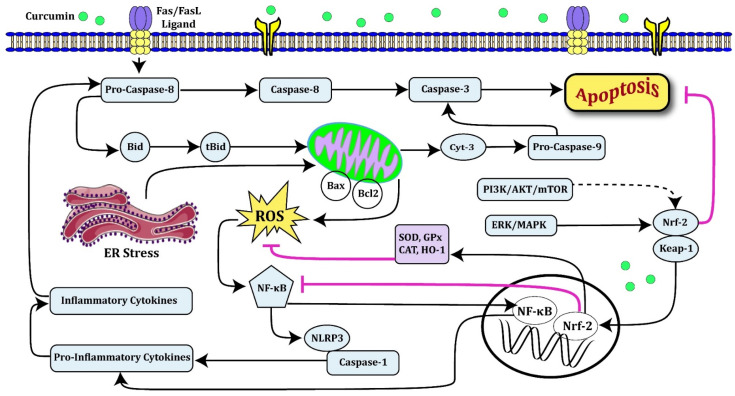Figure 2.
Oxidative stress formed by a number of disorders or external factors such as chemical drugs, heat stress, and so on could induce both extrinsic and intrinsic apoptotic pathways [75]. However, during abnormal conditions, endoplasmic reticulum (ER) stress could also activate the intrinsic apoptotic pathway [76], leading to cell death. On the other hand, disruption of Bax/Bcl-2 balance by mitochondrial dysfunction leads to ROS elevation [75]. Afterward, ROS activate the NF-κB signaling pathway, subsequently increasing the release of inflammatory cytokines. Interestingly, antioxidant sources-such as curcumin-could decrease ROS production and cell death rate, finally. In this regard, curcumin via activating the Nrf2 pathway could increase the levels of cellular antioxidants [43,48], such as SOD, GPx, and CAT, and by activating the expression of HO-1 (Heme Oxygenase-1), as an Nrf2-regulated gene which is involved in the prevention of vascular inflammation, could directly or indirectly decrease the generation of ROS as well as inflammation [28,54]. On the one hand, it has been reported that curcumin via activating the ERK and MAPK could ease the oxidative damage [32,60].

